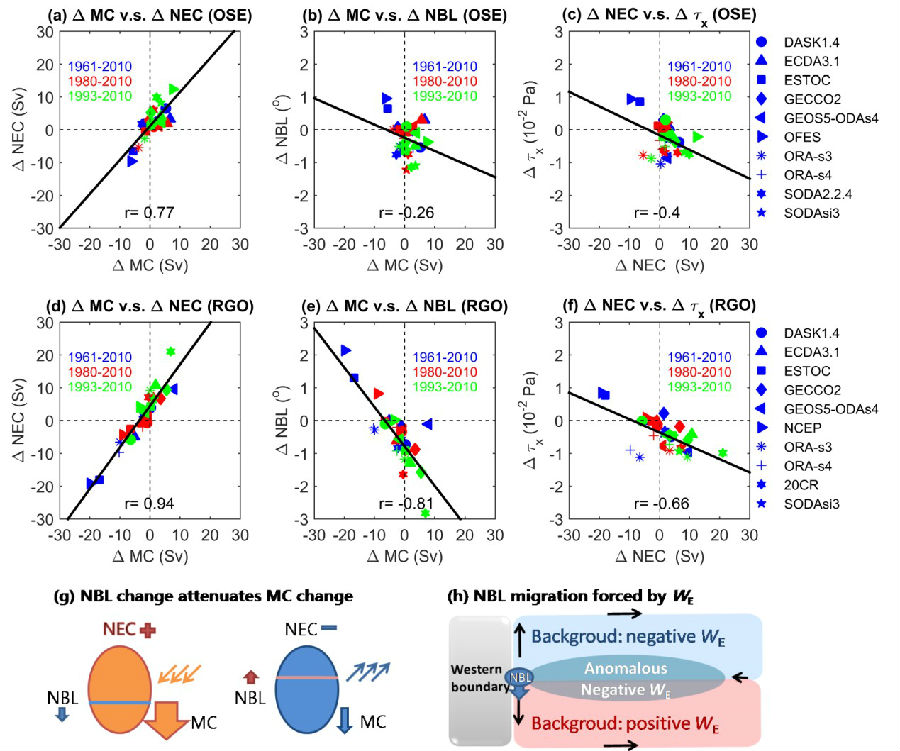Published in Geophysical Research Letters, 24 June 2019
Ten ocean state estimate products are analyzed to quantify the multidecadal change of the Mindanao Current (MC). These data sets suggest multidecadal trends of the MC transport since 1961, 1980 and 1993 are weak (-0.3 Sv, +0.7 Sv, and +2.1 Sv, respectively; 1 Sv ≡ 106 m3/s) and not robust with respect to the large spread of different data sets. The primary cause is the discrepancies in different wind data sets, and change of the North Equatorial Current's bifurcation latitude also acts to attenuate the MC change. The bifurcation latitude shifts southward (northward) under enhanced (weakened) northeasterly trade winds and feeds less (more) water to the MC. Experimental simulations of a reduced-gravity model forced by reanalysis and model-projected wind trends suggest an asymmetry of the MC's response to wind forcing. Anomalous westerly winds in the western Pacific can dramatically enhance the MC through spinning up the cyclonic local recirculation.

Figure. Scatterplots of (a) Mindanao Current (MC) versus North Equatorial Current (NEC), (b) MC versus NEC's bifurcation latitude (NBL) and (c) NEC versus zonal wind stress τx of 8°N-18°N, 120°E-70°W in temporal change for the periods of 1961-2010, 1980-2010, and 1993-2010 derived from 10 ocean state estimates (OSE). (d-f) Same as (a-c) but from reduced-gravity ocean (RGO) model runs. Schematic of (g) damping effect of the NBL change on the MC change and (h) the influence of the anomalous Ekman pumping velocity wE on the migration of the NBL. (Duan et al., 2019, GRL)
Duan, J., Li, Y.*, Wang, F., & Chen, Z. (2019). Multidecadal change of the Mindanao Current: Is there a robust trend?. Geophysical Research Letters, 46, 6755–6764. doi:10.1029/2019GL083090